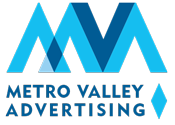At one time, TV was rather straightforward to buy. Look at the ratings for your target demographic and allocate budget so that you maximize reach and get your desired frequency. If people called or walked in the store, the ad worked. In our digital age, the focus on omnichannel media plans requires measurement of which channel achieved its desired objective and which did not. Which leads us to ask, are your TV ads still working?
Success of TV advertising can be determined by a number of factors. Good creative is essential in achieving goals. Placing the ads in front of the desired audience is critical. Timing ad placement also plays a large role. Smart measurement techniques can not only determine if your TV ads are still working but also identify where the process needs improvement.
Why TV Advertising Still Matters
Even as digital channels dominate conversation, television remains a powerful medium. As a seasoned advertising agency, we know TV reaches broad, engaged audiences. It also establishes brand credibility in a way many digital formats cannot easily duplicate. Moreover, for lead-generation campaigns, TV can set the foundation by building awareness that drives searches, calls, or site visits. Therefore, when your media mix includes TV, you need to ask: are your TV ads still working? And do you have the measurement in place to prove value?
The Challenge of Measuring Linear TV Media
Measuring traditional, or linear, TV is harder than digital. Unlike display or search ads, there’s no click-through link to track. Metrics such as GRPs or reach tell you exposure but not necessarily action. Further complicating matters is audience fragmentation. Viewers now watch streaming, on-demand, smart TV apps cable and traditional broadcast. Attribution is no longer simple. For an advertising agency focused on lead generation and advertising for service-based businesses, measurable outcomes matter. If you can’t tie the TV buy to leads or conversions, you risk spending media dollars without knowing impact. So how do you move from “we ran the ad” to “we know it worked”?
Set Clear, Measurable Goals
First, define what success looks like. Are you targeting awareness, engagement, or conversions? Ask strategic questions: What is the objective of the TV campaign? Who is the target audience? What’s the conversion path after the TV ad airs? Without clarity on these questions, you cannot align measurement properly. Once you have goals, you can pick the right metrics.
Track Web Traffic Uplift
One way to see if your TV ads move the needle is to track website traffic. Often, TV exposure correlates with increases in site visits. Key metrics include total visits, branded vs. non-branded visits, time on site, and pages per session. To implement this, use an analytics platform to mark the period of TV spots, then note spikes in traffic that align with air time. Be careful though, correlation doesn’t always equal causation. You must consider external factors such as seasonality or other channels. Traffic is one piece but we need more direct signals.
Monitor Branded and Direct Traffic
Branded traffic (searches for your brand name) and direct traffic (visitors entering your URL directly) are stronger indicators of TV impact. Why? When you run TV ads, you drive awareness, and people remember your brand or URL and return directly. Implementation tip, set up segments in analytics for branded search terms and direct sessions. Compare baseline metrics (pre-campaign) vs. during and post-campaign. While web signals matter, offline conversion paths are often critical, especially in lead-generation for service businesses.
Use Unique Phone Numbers (Call-Tracking)
For many service-based businesses, calls are the primary lead source. Assign unique phone numbers to your TV campaign or better yet, by channel. Then track calls and tie them back to the campaign. This gives you direct evidence of lead generation from the TV ad. Ensure your call-tracking platform records call source, duration, and conversion. Combine this with CRM data so you know whether a call resulted in a consult or case. Another variation of tracking is unique URLs.
Use Unique URLs / Landing Pages for TV
Assign a dedicated URL or microsite for the TV ad (for example, YourLawFirmTV.com instead of a generic URL). This makes tracking simpler, you can monitor how many visitors came via the TV ad because they landed on that page or typed the URL. You can embed a call-to-action specific to that campaign. To do this, set up the landing page and tag it with UTM parameters for analytics. Then compare performance to other traffic sources. All these signals help.
Leverage Brand Lift Studies
When your objective includes long-term brand building (not just immediate leads), brand lift studies are indispensable. These measure changes in awareness, recall, purchase intent and other brand attributes. To implement, use a survey panel before and after the campaign. Ask questions like, “did you see or hear this ad”? Do you recall the brand? Would you consider the brand? Remember that brand lift studies take time and budget, but they yield great value.
Consider ACR (Automatic Content Recognition) and Advanced Measurement
Recent advances are making TV ad measurement more precise. For example, ACR (Automatic Content Recognition) technology in smart TVs can detect what content and what ads were played. This allows you to link exposure behavior, such as web search, site visits and store footfall. For example, some platforms can match ad exposure with web activity at a household level. These advanced measurements build more complete visibility across linear and streaming. Ultimately, you need to bring all of this together in a measurement framework.
Build a Measurement Framework & Attribution Strategy
Develop a framework that aligns your goals, metrics, and data sources. Use incremental vs. baseline measurement approaches. For example, run your TV campaign in certain markets and not others (control markets) and compare results. Show how to assign attribution, TV views to site visits, then calls and finally, conversion. Utilize dashboards that combine offline and online metrics, calls, visits, conversions, brand lift. Emphasize the need for continuous testing and refinement. You must treat measurement as on-going, not one-and-done.
Conclusion
TV advertising still can deliver strong results, but only if you measure it properly. For marketing professionals focused on lead generation, the role of an advertising agency is to tie TV spend to outcomes, engagement, leads, conversions. Review your next TV buy with these measurement tactics in mind. Then bring clarity to your media investments and secure measurable results. If you do that, you won’t have to ask are your TV ads still working?



